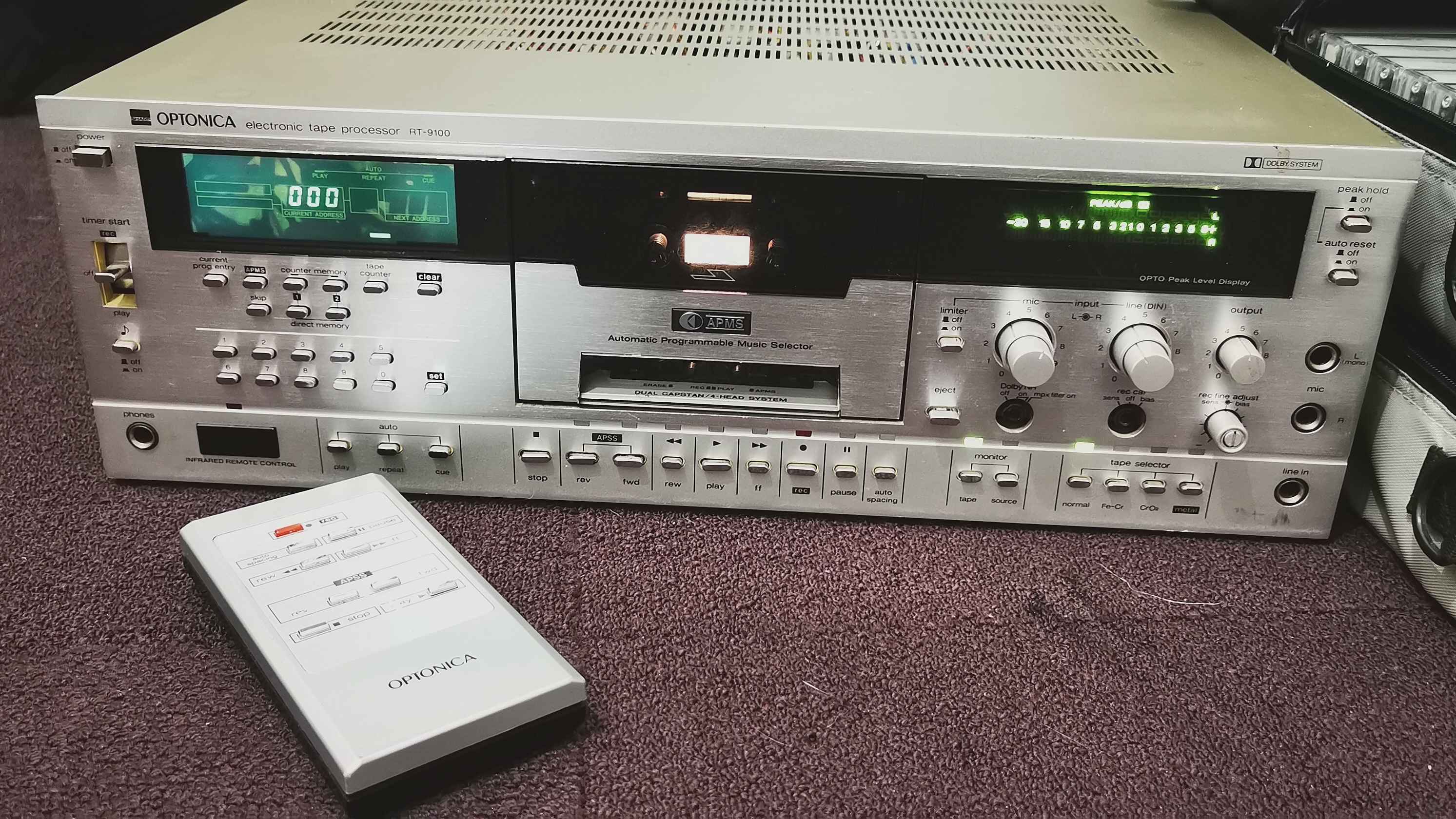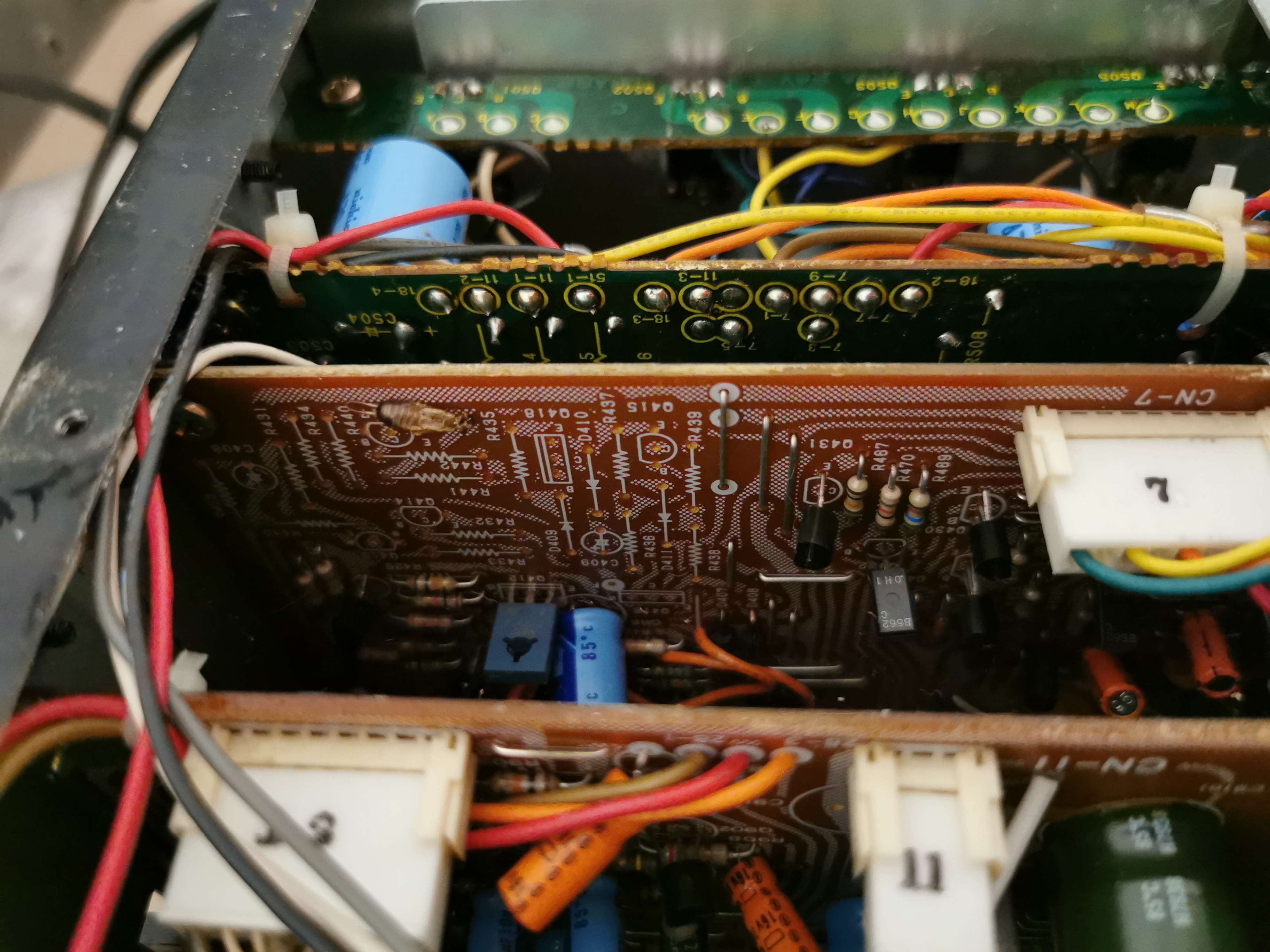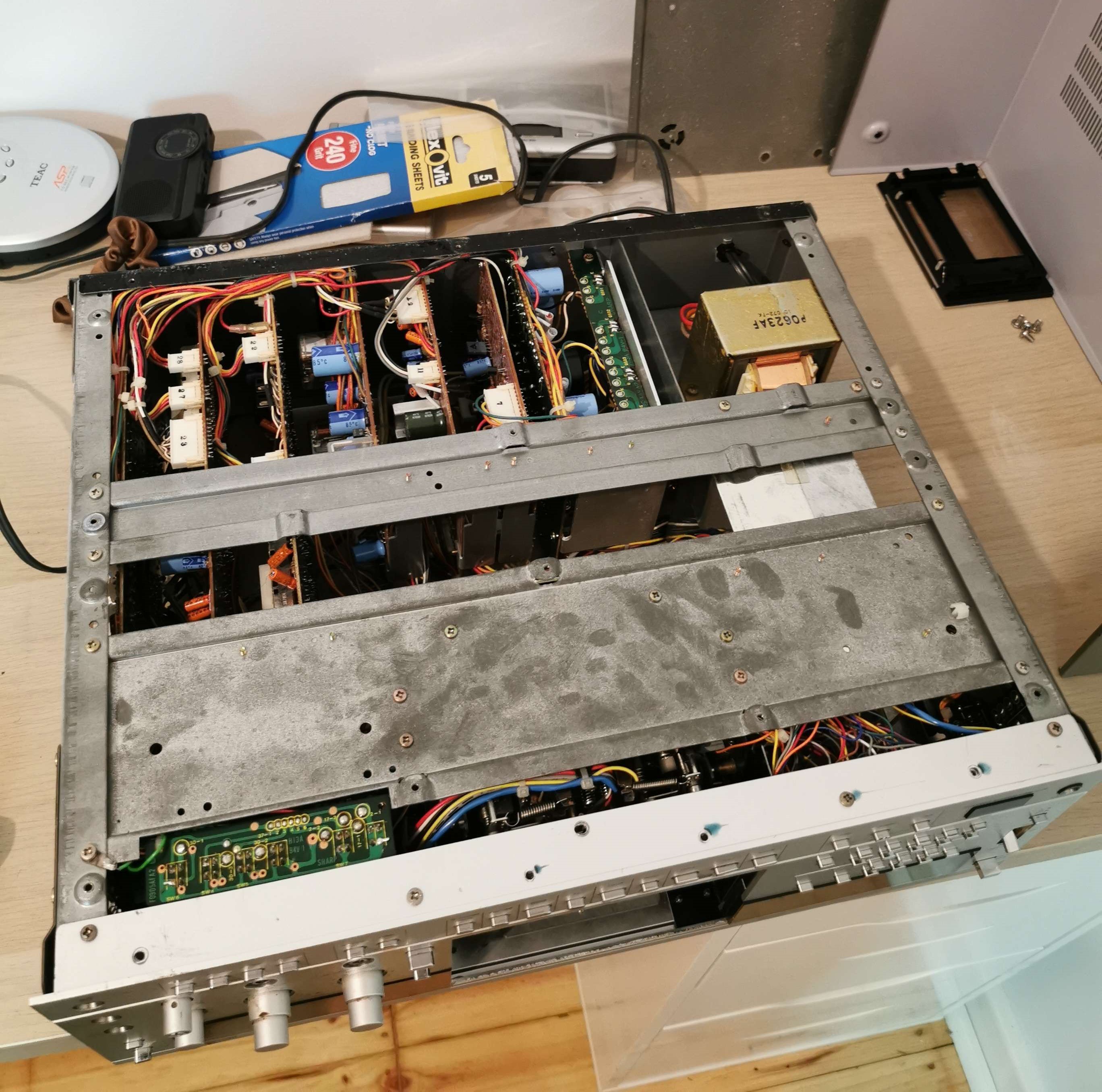


The Optonica RT-9100, released around 1981 - 1982, is by all accounts the highest end cassette deck ever producedd by the Sharp corporation in its existence. The "Optonica" name was a badge given to their top-end audiophile-grade components, as Technics is to Panasonic, and the 9100 series represents their absolute flagship, a system consisting of a tuner, turntable, power and preamplifier, and a specialised audio timer unit which, when plugged via a proprietary cable into the RT-9100, would also serve as a real time counter. The only cassette recorder above this in their lineup was the RT-6905, which is quite simply the RT-9100 cassette deck and the AD-200 audio timer put into a single housing - hence me being comfortable saying the RT-9100 is the company's magnum opus, as the only device more expensive is just the same machine in a different box.
And what a magnum opus it is! The RT-6905 seems to have retailed for an even $1000USD in 1981 according to Audio magazine, so the timerless RT-9100 likely retailed around the $800 mark - close to 6 grand today ($2800 US dollars). The machine features a wealth of features and design choices that put it in the "Halo model" category - rather than being designed to sell in and of itself, its designed to wow on the sales floor and entice people to look at the rest of the company's product line instead once they see the price tag, with the similarly featured but significantly cheaper RT-7100 seeming to be a much more common model. (So much so that when I told a friend we'd gotten a 9100, she corrected me). "Halo" features include four tape heads, yes you read that correctly - an erase head, record head and playback head for full 3-head tape monitoring and gap optimisation, plus a fourth dedicated head for the unit's program search features. And what program search features it has!
The machine's front panel is absolutely clad in buttons - Sharp corporation seem to have been all-in on program search functionality. The most basic implementations are quite crude - simply hold down play and fast forward at the same time, and the deck will fast forward at a reduced rate until it finds a 10ish second gap on the tape, and stops, letting you skip to the next silent passage. On the 9100, though, the implementation is anything from crude - you get forward skipping and back skipping, with their own dedicated buttons of course, a readout of the current track number - like a CD player - and the ability to cue the machine up to play a series of tracks in any given order! Key in numbers on the numerical pad and then hit the "set" button to save a selection - so, for example, typing in 10 > set > 8 > set > 1 > set > 4 > set, then hitting play, the deck will rapidly skip through the deck until it finds track 10, play it start to end, then jump to 8, then 1, then 4! And, in this mode of operations, hitting the track skip buttons will skip to your next saved selection too! If you put a cassette into the machine that's already halfway played, just key in the current track you're on so the deck knows, or hit a button and it will rewind to the start and stop.
It also features a handy "Auto spacing" button - this is intended for recording off the radio, and when pressed during recording, it will mute your recording, fast forward for a brief moment, and then pause the deck - adding in a 4 second gap of audio for track seeking, that way when the next song you want on the radio comes on, just hit play on the deck to continue your recording, and the resulting tape will work perfectly with the program search features. There's also "counter memory" - where rather than jumping to track numbers, you can save specific tape-counter positions for it to jump back to at will as well, and simply hitting the "APMS" button on that left button-panel will make the deck jump to your saved location. And, of course, when paired with the optional audio timer unit, that extra unit also functions as a real-time tape counter, letting you save and jump to positions based on how many minutes into the tape they are!
This wealth of program search features is incredible enough, but even with them completely removed this would be a high-end, highly capable cassette deck. It features a dual-capstan design, so very smooth tape tension and very low wow and flutter statistics, with a quartz-locked capstan motor to keep it running within very tight tolerances, plus a second motor dedicated to fast forwarding/rewinding as well - two motors means each motor can be properly designed for its specific purpose. Fully solenoid operated, of course, dedicated tape type selection buttons for all four tape types - ferrochrome too - and options for auto bias sensing, manual bias adjustment on the front panel (and Dolby calibration), and a row of easily accessed fine-calibration potentiometers on the side for each tape type as well. Four heads - erase, record, playback and program search - allow you to playback recordings as you make them to ensure you have them set correctly (and the unit has double dolby chips, so it can record and playback with Dolby at the same time, of course), plus a bright and clear digital display that appears to be a VFD, with peak meters to boot.
All in all an incredibly advanced cassette deck with a wealth of features and performance to match. The construction is incredible, too, though! While on most cassette decks, all the internal components are mounted to the housing panels, on this one, everything is separately mounted so a strong internal frame - the housing mounts to the frame, the circuitboards mount to the frame, the faceplate and the mechanism all mount to the frame. Meaning that everything can be separately removed - with just a handful of screws, the whole tape mechanism slides backwards and lifts right out, letting you work on the mechanical parts on your desk while the rest of the machine sits over in a corner, no need to disassemble the faceplate or even touch the circuitboards to do it. And my, what circuitboards! To support those program search features, the unit is PACKED with them, and the attention to detail continues here too - as seen in the second image at the top, they've gone to the effort of printing, in white ink, the pattern that the traces take onto the components side, so you don't need to flip the board over to see what you're doing! They even have numbers printed on the wealth of wiring plug connectors, so that you don't lose track of what plugs in where. The machine is built almost like professional/broadcast equipment, modular and easily fixed, designed for whole circuitboards to be removed to be individually worked on and the like - an attention to detail for the repair technician I haven't encountered before and am absolutely awed by.
Right now the machine is in need of some repairs - obviously the knobs need replacing on the front, but also the pinch rollers are completely turned to a horrid goo, so I need to source replacement rollers. Other than that it appears to be in mechanically decent shape, though lord only knows what faults may have developed in that absurd mass of circuitboards inside the machine. Very very enjoyable to service though, and excited to see it up and running!